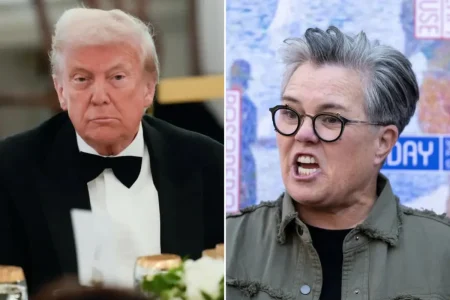Cameroon’s Eternal President: Paul Biya’s Unprecedented Political Longevity
The Ageless Ruler: Biya’s Decades of Dominance in Cameroon’s Political Landscape
In the lush, resource-rich nation of Cameroon, nestled at the crossroads of West and Central Africa, President Paul Biya has become synonymous with political permanence. At 91 years old, the soft-spoken leader who first took office when Ronald Reagan was still in his first term as U.S. President shows no signs of relinquishing power. If he completes his current term, which extends to 2025, Biya will have ruled Cameroon for an astonishing 43 years. More remarkably, should he pursue and win another term—a scenario many political analysts consider entirely plausible given his grip on power—he would approach his 100th birthday while still occupying the presidential palace in Yaoundé.
“The best is still to come,” Biya famously declared to his supporters during his last campaign, a statement that reflects both his unwavering confidence and the extraordinary political longevity that has made him one of Africa’s longest-serving heads of state. His reign has spanned generations—children born at the beginning of his presidency now have grandchildren—yet the mechanics of his endurance represent a masterclass in political survival that merits closer examination. Biya’s leadership style, characterized by careful management of potential rivals, strategic use of patronage, and meticulous control of security forces, has allowed him to maintain a firm grip on Cameroon’s political machinery despite growing discontent among segments of the population and persistent challenges to national unity.
Four Decades of Rule: The Evolution of Biya’s Governance Strategy
When Paul Biya assumed power in 1982, following the resignation of Cameroon’s first president, Ahmadou Ahidjo, few could have predicted his remarkable staying power. Initially viewed as a reformist who might guide Cameroon toward greater democratization, Biya’s governance approach evolved over decades into what political scientists describe as “strategic authoritarianism.” His leadership model balances the appearance of democratic institutions—regular elections, a parliament, and a nominally independent judiciary—with behind-the-scenes control mechanisms that effectively neutralize opposition.
The longevity of Biya’s rule has been facilitated by constitutional amendments that removed term limits in 2008, enabling his continued candidacy. This constitutional engineering represents just one facet of a sophisticated system that has allowed him to maintain control despite spending significant time abroad, primarily in Switzerland, earning him the nickname “the absent president” among critics. Cameroonians have grown accustomed to long stretches without public appearances from their leader, sometimes lasting months. Nevertheless, his political machine continues functioning smoothly in his absence, a testament to the robust system of loyalists he has cultivated throughout the government and military hierarchies. This network of supporters, many of whom have served in his administration for decades, ensures stability while simultaneously preventing any potential successor from gaining too much influence.
Governance Challenges: Managing a Nation at a Crossroads
Cameroon under Biya’s leadership faces multifaceted challenges that would test any administration, let alone one headed by a nonagenarian. The country grapples with an ongoing separatist conflict in its Anglophone regions, where communities that comprise approximately 20% of the population have felt marginalized within the predominantly Francophone nation. This linguistic divide, rooted in the country’s unique colonial history under both British and French rule, has escalated into armed conflict since 2016, claiming thousands of lives and displacing over a million people.
Simultaneously, Biya’s government confronts economic hurdles including high youth unemployment, infrastructure deficits, and corruption that transparency watchdogs describe as “endemic.” Despite possessing significant natural resources—including oil, timber, and agricultural products like cocoa—economic growth has been uneven and inequitably distributed. The COVID-19 pandemic further stressed Cameroon’s economic foundations, exposing vulnerabilities in healthcare infrastructure and social safety nets. Against this backdrop, Biya’s promise that “the best is still to come” strikes many observers as increasingly disconnected from the lived reality of ordinary Cameroonians, particularly the youth who comprise approximately 60% of the population and have known no other president. These young citizens, many unemployed or underemployed, represent both a challenge to Biya’s continued rule and a potential source of instability if their aspirations remain unaddressed.
The Politics of Longevity: How Biya Maintains Control
The mechanics of Biya’s extraordinary tenure offer insights into the nature of resilient authoritarian governance in the 21st century. Unlike more flamboyant or openly repressive dictators, Biya has perfected a low-key approach to maintaining power that combines selective cooptation with targeted repression. Opposition figures who gain too much prominence often find themselves facing legal challenges, while potential rivals within the ruling Cameroon People’s Democratic Movement (CPDM) are routinely reshuffled in cabinet positions to prevent them from developing independent power bases.
Electoral processes in Cameroon, while regular, have consistently favored the incumbent through a combination of factors including media bias, resource advantages, and electoral administration that international observers have criticized as lacking transparency. The 2018 presidential election, which Biya won with a reported 71% of the vote, was marred by low turnout in opposition strongholds and allegations of irregularities that opposition candidate Maurice Kamto continues to dispute. Beyond electoral politics, Biya has maintained stability through strategic alliances with Cameroon’s diverse ethnic groups, careful balancing of regional interests, and maintenance of close relationships with international partners, particularly France, the former colonial power that maintains significant economic interests in the country. These international relationships have provided both legitimacy and practical support, including security cooperation that has proven crucial in combating Boko Haram extremists in Cameroon’s Far North region.
International Relations: Cameroon’s Global Positioning Under Biya
On the international stage, President Biya has navigated shifting geopolitical currents with remarkable adaptability, maintaining Cameroon’s traditional ties to Western partners while increasingly engaging with China and Russia. This diplomatic balancing act has allowed his government to secure economic support and security partnerships without becoming overly dependent on any single foreign power. France remains a crucial ally, with significant investments in Cameroon’s economy, while China has emerged as a major infrastructure development partner, financing projects including deep-water ports and hydroelectric dams.
The United States and European Union have periodically expressed concerns about human rights issues and democratic backsliding in Cameroon, particularly regarding the handling of the Anglophone crisis, but these concerns have rarely translated into meaningful pressure for reform. International human rights organizations have documented abuses by both government forces and separatist fighters in the Anglophone regions, creating a humanitarian situation that has drawn increasing international attention. Despite these challenges, Biya has successfully positioned Cameroon as an important regional security partner in the fight against terrorism in the Lake Chad Basin, leveraging this role to minimize external pressure on domestic governance issues. This strategic international positioning represents another dimension of Biya’s political acumen, allowing him to maintain domestic control while securing needed external support.
The Future of Cameroon: Succession Questions and National Prospects
As Paul Biya advances further into his ninth decade of life, questions about succession loom increasingly large over Cameroon’s political landscape. The president has systematically avoided grooming an apparent successor, likely recognizing that doing so might prematurely diminish his own authority. This strategy, while effective for maintaining his personal position, creates significant uncertainty about Cameroon’s future stability. Political analysts warn that the absence of a clear succession mechanism could lead to internal power struggles within the ruling party or even military intervention when Biya eventually leaves office.
For ordinary Cameroonians, particularly the youth, the prospect of potentially another seven-year term under a president who would be 98 years old by its conclusion raises profound questions about the nation’s capacity to address pressing challenges of economic development, conflict resolution, and institutional renewal. Yet Biya’s political machinery remains formidable, and the fractured nature of Cameroon’s opposition means that any electoral challenge faces significant obstacles. As Cameroon approaches the next presidential election, currently scheduled for 2025, the tension between continuity and change will likely define the national conversation. Biya’s insistence that “the best is still to come” reflects his determination to remain at Cameroon’s helm, guiding what he sees as the nation’s continuing development journey. Whether this continuing journey under his leadership truly represents the best path forward for Cameroon remains a question that ultimately only Cameroonians themselves can answer—should they be given the opportunity for a genuinely democratic choice about their nation’s future leadership.









